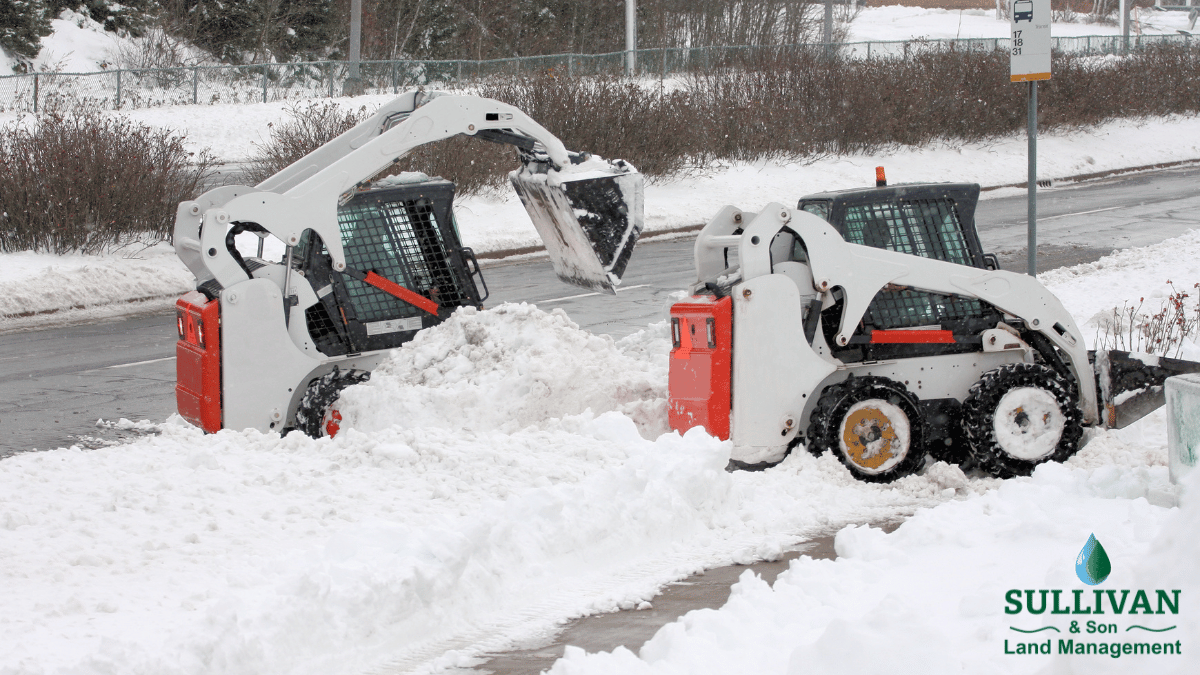You know that sinking feeling when you pull into your business at 5 a.m. after a winter storm and realize your parking lot is buried under eight inches of heavy, wet snow? Your first delivery arrives in two hours, employees are due in three, and customers will start showing up by nine. That's when snow management stops being a "nice to have" and becomes absolutely essential.
We've been handling winter maintenance for Stamford properties long enough to know that preparation makes all the difference. The businesses that sail through winter are the ones that planned in October, not the ones scrambling to find a plow truck in January when everyone else is doing the same thing.
The Real Costs of Ignoring Winter Prep
Here's what happens when snow and ice pile up: someone slips in your parking lot and you're dealing with liability claims. Delivery trucks can't access your loading dock. Customers take one look at your icy entrance and drive to your competitor instead. And if you're in a strip mall or shared property, you might be violating your lease terms by not maintaining safe access.
But there's another cost people don't think about until spring arrives. Ice doesn't just sit on your asphalt—it works its way into cracks, expands, and turns minor surface issues into major pothole repairs. That decorative curbing around your landscaping beds? A plow operator who can't see the boundaries will shear it right off. We've seen properties lose thousands in infrastructure damage because they treated winter maintenance as an afterthought.
What Actually Works in Stamford's Coastal Climate
Stamford isn't Boston. You don't always get clean, fluffy snow that's easy to push. Instead, you get that coastal mix—six inches of snow, then sleet, then freezing rain, then it warms up to 35 degrees and everything turns into a skating rink when the sun goes down. That's why plowing alone won't cut it here.
Salt becomes your best friend, especially for those areas that see constant foot traffic: entryways, the path from parking to your front door, anywhere with even a slight slope. We typically apply salt before the storm hits to prevent bonding, then again after plowing to keep ice from forming overnight. For properties with planted areas nearby or concerns about runoff into storm drains, there are calcium-based alternatives that won't torch your landscape beds come spring.
The timing matters more than people realize. A lot cleared by 6 a.m. means your business day starts normally. One cleared by 10 a.m.? You've already lost half a day of productivity, and good luck getting customers to navigate a partially-cleared, slushy mess during the interim.
Planning Before the First Flake Falls
October is when you should be thinking about winter, not December. Get those reflective stakes in the ground marking curbs, valve boxes, and landscape edges before the ground freezes. Walk your property and identify the trouble spots—that little slope near the side entrance that always ices up, the corner where wind deposits drifts, the area where melting snow from the roof creates a sheet of ice.
If you're in a plaza with limited space for snow storage, you'll need to plan for hauling. After two or three big storms, there's simply nowhere left to push the snow, and you need someone with equipment to truck it off-site. Waiting until you're out of room means you're competing with every other property owner in the same situation.
The Emergency Response Reality
Storms don't check your business hours. We've gotten calls at 2 a.m. because a surprise system moved in faster than forecasted, and a medical office needed their lot clear for patients arriving at 7 a.m. Having a contractor on standby who can respond around the clock isn't about luxury—it's about keeping your doors open when weather doesn't cooperate with your schedule.
Here's the practical reality: you can't run a business and monitor weather forecasts and coordinate snow removal at the same time. The business owners who handle winter best are the ones who set up their snow contract in the fall and then forget about it. They know that when they arrive after a storm, the lot will be clear, the walks will be salted, and they can focus on actually running their business instead of playing parking lot manager.
If you're heading into winter without a solid plan, now's the time to change that. Because once that first storm hits, it's too late to be making phone calls.




